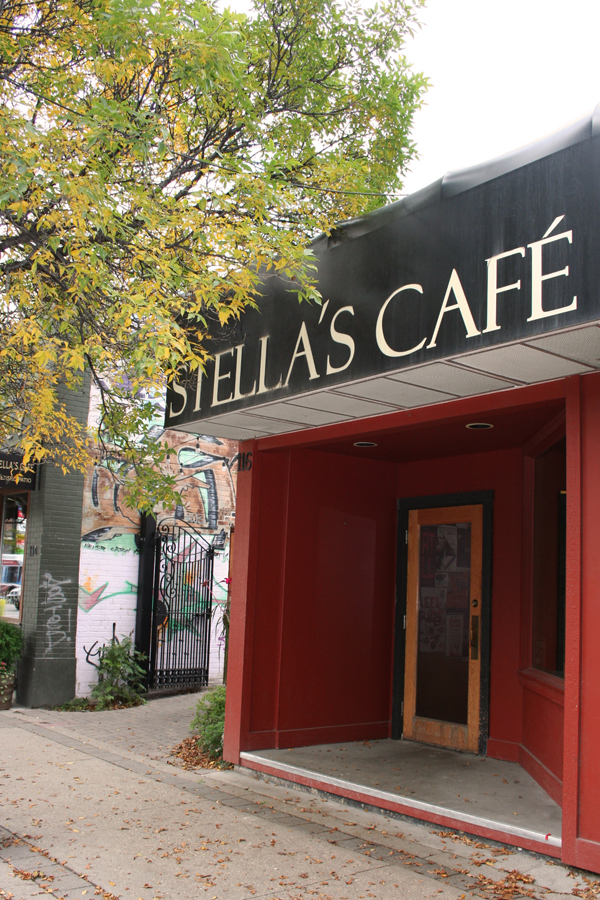I can honestly admit that some of the coolest people I know are climbers. Maybe they’re cool because they climb. Or maybe climbing makes them cool. Or maybe they’re cool because when they talk about climbing I can’t understand a thing they say.
To get to the bottom of this coolness enigma, I enlisted the help of the University of Manitoba Climbing Club (UMCC) president Chris Dart. He has compiled the following glossary of climbing terms to help shed some light on the climbing world:
Types of Climbs
Bouldering: The practice of climbing on large boulders. Typically this is close to the ground, so protection takes the form of crash pads and spotting, instead of belay ropes.
Deep water soloing: Free climbing an area that overhangs a deep enough body of water to allow for a safe fall.
Rappel: The process by which a climber may descend on a fixed rope using a friction device. Also known as “abseil” or “roping down.”
Top rope: To belay from a fixed anchor point above the climb.
Lead climbing: A form of climbing in which the climber places anchors and attaches the belay rope as they climb (traditional) or clips the belay rope into pre-placed equipment attached to bolts (sport).
Sport climbing: A style of climbing where form, technical (or gymnastic) ability and strength are emphasized over exploration, self-reliance and the exhilaration of the inherent dangers involved in the sport. Sport climbing routes tend to be well protected with pre-placed bolt-anchors and lend themselves well to competitive climbing.
Traditional climbing: A style of climbing that emphasizes the adventure and exploratory nature of climbing. While sport climbers generally use pre-placed protection, many traditional (or “trad”) climbers will place their own protection as they climb, generally with a rack.
Slab climbing: A particular type of rock climbing and its associated techniques involved in climbing rock that is less than vertical. The emphasis is on balance, footwork and making use of very small features or rough spots on the rock for friction.
Crack climbing: To ascend on a rock face by wedging body parts into cracks, i.e. not face climbing.
Face climbing: To ascend a vertical rock face using finger holds, edges and smears, i.e. not crack climbing.
Traverse: To climb in a horizontal direction.
Climbing Grades
V-grade: A technical grading system for bouldering problems, invented by John Sherman. The scale runs from V0 to V16.
Yosemite Decimal System: A numerical system for rating the difficulty of walks, hikes and climbs in the United States. The rock climbing (5.x) portion of the scale is the most common climb grading system used in the country. The scale runs from 5.0 to 5.15b (as of 2008).
Climbing Moves
Crimp: A hold which is only just big enough to be grasped with the tips of the fingers.
Gaston: A climbing grip using one hand with the thumb down and elbow out. The grip maintains friction against a hold by pressing outward toward the elbow.
Jamming: Wedging a body part into a crack.
Jug hold: A large, easily held hold. Also known simply as a jug.
Lock-off: Using tendon strength to support weight on a hand hold without tiring muscles too much.
Mantle: A move used to surmount a ledge or feature in the rock in the absence of any useful holds directly above. It involves pushing down on a ledge or feature instead of pulling down. In ice climbing, a mantle is done by moving the hands from the shaft to the top of the ice tool and pushing down on the head of the tool.
Match: To use one hold for two limbs or to swap limbs on a particular hold.
Nub: A little hold that only a few fingers can grip, or the tips of the toes.
Pinch hold: This is a hold where you must pinch it to hold on. They come in various sizes.
Smearing: To use friction on the sole of the climbing shoe in the absence of any useful foothold.
Undercling: A hold which is gripped with the palm of the hand facing upwards.
Finishing a climb
Pinkpoint: To complete a lead climb without falling or resting on the rope (hangdogging), but with pre-placed protection and carabiners. Also known as clean and see redpoint.
Red point: To complete a lead climb without falling or resting on the rope (hangdogging).
On-sight: A clean ascent, with no prior practice or beta.
Flash: To successfully and cleanly complete a climbing route on the first attempt after having received beta of some form. Also refers to an ascent of this type; for ascents on the first attempt without receiving beta see on-sight.
Sort-of-Random Terms
Beta: Information about a climb.
ATC: A proprietary belay device manufactured by Black Diamond. ATC stands for air traffic controller.
Belay slave: Someone that volunteers for, or is tricked into, repeated belaying duties without partaking in any of the actual climbing — don’t let this be you!
Crux: The most difficult portion of a climb.
Sandbag: A climb which receives a much lower grade than deserved. Also used as a verb when referring to the act of describing a climbing route as easier than it actually is.
Spotting: An alternative to belaying commonly used during bouldering. A friend of the climber stands beneath them and prevents awkward falls or falls onto hazards.
So there you have it — a glimpse into the awesome and complex world of climbing. Familiarize yourself with these terms and you can actually have a coherent conversation with a climber about the sport. Armed with this new climbing lexicon you are now ready to check out the U of M climbing wall in Frank Kennedy Centre and can converse with the friendly and dedicated wall leaders and climbing club members. The question that is on all of their minds and that is on all of their posters is “So you think you can climb?” That is the name of their upcoming competition on Saturday Feb. 27, from 2–5:30 p.m.. There are fabulous prizes from Mountain Equipment Co-op, Wilderness Supply, Teknik Handholds and Hemp Oil Canada. It costs $15 for UMCC members to compete and anyone can join the club for the yearly fee of $2. Dart explains that the modest fee “gives you all your rentals plus all the chalk you can handle.” So don’t hesitate, check out the climbing club today.




